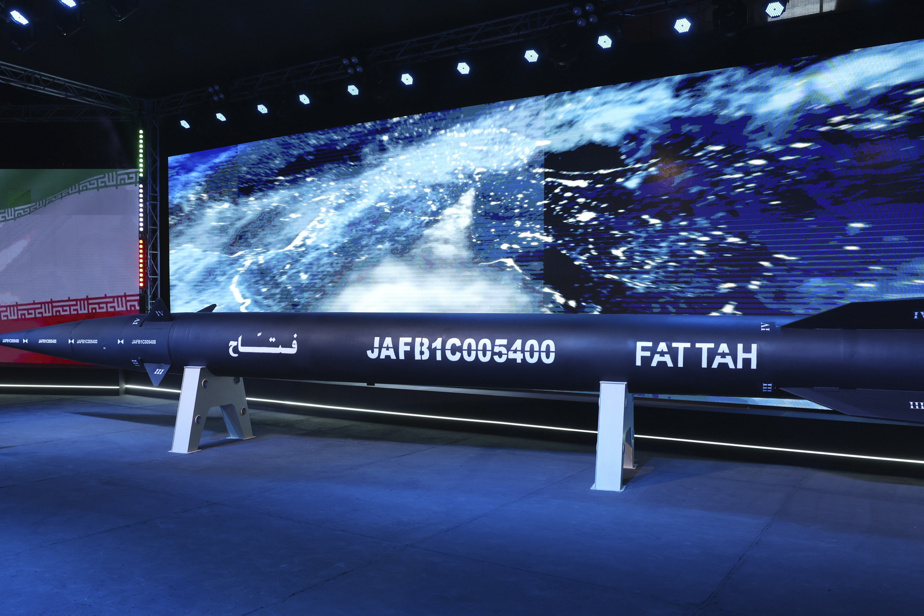(Tehran) Iran unveiled the first locally designed hypersonic ballistic missile on Tuesday, in the presence of President Ebrahim Raisi who hailed a new weapon that “will make the country stronger”.
The official media broadcast images of this missile manufactured by the Aerospace Force of the Revolutionary Guards, the ideological army of the Islamic Republic.
The missile called Fattah was presented on a platform during a ceremony organized in an unspecified place in the presence of President Raisi and military officials, including the head of the Guardians, General Hossein Salami, according to the state television and the IRNA agency.
“We should thank God for this great achievement”, because “it will make the country stronger”, Mr. Raisi said in his speech.
This missile will strengthen Iran’s “deterrent power”, which “brings security and stable peace to the countries of the region”, he added.
According to IRNA, the range of the Fattah missile is 1400 km and its speed before reaching the target “is between 13 and 15 times the speed of sound.
Iran had announced in November the manufacture of this missile, arousing the concern of the International Atomic Energy Agency (IAEA) concerning the Iranian nuclear program.
However, the head of the IAEA, Rafael Grossi, had indicated that this announcement should not “have any influence” on the negotiations around the nuclear program of Iran. These discussions have been stalled since the summer of 2022.
Hypersonic missiles fly low in the atmosphere and are manoeuvrable, which makes their trajectory difficult to predict and their interception difficult.
The development of the Fattah missile will strengthen Iran’s military arsenal and, consequently, the concerns of many countries, in the first place the United States and Israel, the latter fearing that its territory could be reached by Iranian weapons.
Tehran claims that this device can pass through the air defense systems of any country in the region.
Russia, North Korea and the United States announced in 2021 that they had carried out hypersonic missile tests, rekindling fears of a new arms race.
Russia got a head start, announcing in March that it had used Kinjal hypersonic missiles in Ukraine, weeks after the invasion began on February 24.
The unveiling of the new missile comes as Iran seeks to normalize relations with Arab countries, including Saudi Arabia where it is due to reopen its embassy in Riyadh on Tuesday after seven years of discord between the two countries.
Press reports also report indirect contacts between Iran and the United States to revive the agreement known by the acronym JCPOA, limiting Iran’s atomic activities in exchange for the lifting of international sanctions.
US Foreign Minister Antony Blinken reiterated on Monday that the Biden administration considers Iran the main threat to Israel and that it would never be allowed to obtain nuclear weapons.
